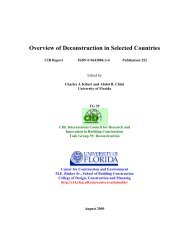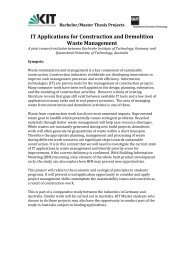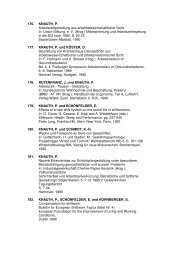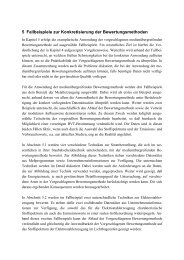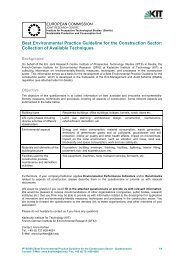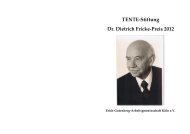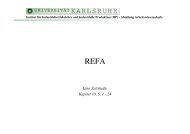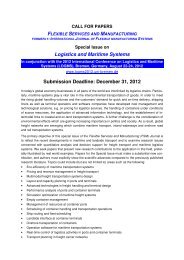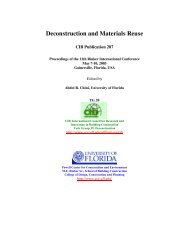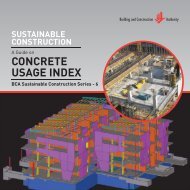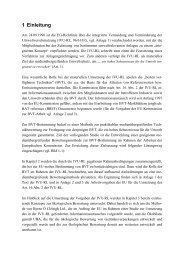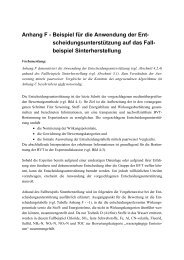Waste reduction final report -4 - Test Input
Waste reduction final report -4 - Test Input
Waste reduction final report -4 - Test Input
Create successful ePaper yourself
Turn your PDF publications into a flip-book with our unique Google optimized e-Paper software.
viewpoint of sustainable development, as well as monitoring (MONET) and controlling over<br />
the course of the current action plan. The MONET system of national indicators offers indepth<br />
insights into sustainable development in Switzerland. Meanwhile, synthetic indicators<br />
such as the ecological footprint provide an appropriate basis for more general statements and<br />
for international comparisons.<br />
Out of the measures portfolio, measures 4-1 (Integrated Product Policy) and 4-2 (Sustainable<br />
Building), each covering several sub-measures, have importance in view of sustainable<br />
construction. They are listed in the appendix [ARE 2009].<br />
In the course of the SDS, a new regulation on the management of immovables and the<br />
logistics of the federal state came into effect in January 2009, following principles of the<br />
strategy (Verordnung über das Immobilienmangement und die Logistik des Bundes VILB).<br />
Life cycle costing should be taken into account as well as sustainable thinking<br />
(articles 2 and 9) [VILB 2009].<br />
Please consult the following links of the government for further information (documents to<br />
some extent available in English):<br />
- http://www.are.admin.ch/themen/nachhaltig/index.html?lang=en<br />
- http://www.bfs.admin.ch/bfs/portal/en/index/themen/21.html<br />
Building strategies<br />
Eco-bau requirements for sustainable building www.ecobau.ch (d/f)<br />
‘Eco-bau’ is a common platform of the public building departments from federal, cantonal,<br />
and city governments with recommendations for sustainable planning, building and<br />
maintaining of buildings and systems. Eco-bau offers checklists and other instruments for<br />
sustainable material decisions, mainly for tenders. For example, information is integrated in a<br />
cost planning software named eco-devis as additional component. The aim of those additional<br />
components is to graphically represent ecologically advantageous performances. This helps<br />
planners to integrate considerations about sustainability in building projects and material<br />
decisions. The information given primarily directed towards designers assigned by the public<br />
building departments. The requirements are already being used at many building<br />
departments, for example in the cantons of Zurich and Bern as well as in the City of Zurich<br />
(Amt für Hochbauten) [CIB 2008].<br />
SNARC (SIA D 0200)<br />
SNARC stands for “System for an environmental sustainability assessment of architecture<br />
projects”. It can be downloaded on www.ecobau.ch (d/f).<br />
It is a tool for assessing a project during an architecture competition. It is a systematic<br />
approach aimed at facilitating an impartial assessment of a project’s fulfilment of<br />
environmental objectives. The ten evaluation criteria cover important aspects like resource<br />
demand and embodied energy in construction and flexibility for later refurbishment. The<br />
evaluation is made with the help of graphs and information in tables, e.g. on energy use in<br />
giga joules [CIB 2008].<br />
107



